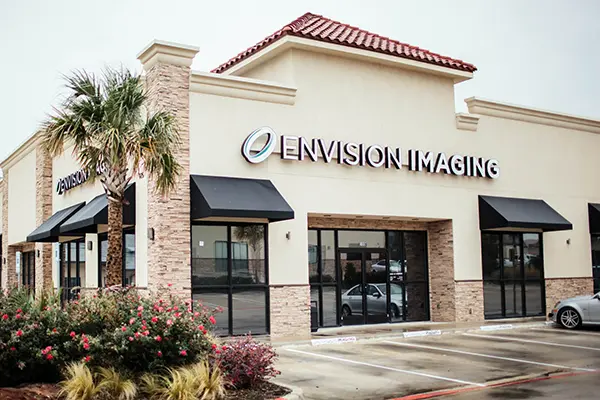
Nuclear medicine imaging provides unique and special information that typically cannot be obtained using other imaging procedures. The greatest benefit of nuclear medicine, therefore, is that it offers the potential to identify the disease in its earliest stage and infancy.
Jump Ahead:
What Is Nuclear Medicine Imaging?
Nuclear medicine is a medical specialty that utilizes radioactive substances to diagnose and even treat diseases like cancer or the early onset of neurological disorders. Like x-rays, nuclear medicine imaging uses radiology, but in this case, it’s performed inside out — endoradiology. The scan is minimally invasive, except for when intravenous injections are used. However, these are usually painless.
Depending on the type of exam, you may be treated with radiotracers via injection, or asked to swallow or inhale them in gaseous form. Radiotracers are molecules that are labeled with a small amount of radioactive material that can be detected on the scan. There are different kinds of radiotracers used that either bind to specific proteins or accumulate in areas where inflammation or tumors are present. Nuclear scanning services allow your doctor to identify a disease well before it could be viewed wit other types of imaging.
For example, a common radiotracer is a molecule similar to glucose — F-18 fluorodeoxyglucose or FDG. Because cancer cells metabolize at a higher rate, they often absorb this radiotracer at a higher rate, which can be seen on the imaging test. The specialized camera produces pictures and can also provide your doctor with molecular information.
Benefits of Nuclear Medicine
Nuclear medicine imaging provides many benefits that are unique to this type of imaging procedure, such as:
- The imaging information obtained is currently unattainable through other diagnostic procedures
- For many diseases and conditions, nuclear medicine yields highly beneficial information that medical professionals need to make a more accurate diagnosis and determine the best possible treatment
- This scan can identify a disease earlier than other types of imaging tests
- Nuclear medicine is minimally invasive and makes intrusive exploratory surgeries less common
How to Prepare for a Nuclear Medicine Scan
Before your exam, you will fill out a screening form asking about anything that might create a health risk or interfere with the imaging. The screening form will be reviewed by your technologist prior to entering the imaging suite.
To ensure an optimal exam, all patients will be asked to change into a gown or scrub suit provided by the facility. Your technologist will advise you to remove all external objects when changing into the approved garments. This includes hearing aids, hairpins, and all jewelry, to include body piercings when possible. Lockers are available to secure your personal items.
How Are Nuclear Medicine Scans Performed?
Nuclear medicine imaging procedures are performed as outpatient exams. During the scan, you will lie on an examination table, and a technologist may insert an IV into a vein in your hand or arm depending on the type of imaging procedure being done. Then, the radiotracer will either be injected intravenously, or you’ll be asked to swallow it or inhale it as a gas.
Radiotracers can take anywhere from several seconds to several days to travel through your body and accumulate in the area that requires examination. For that reason, your test may or may not be performed immediately — you might have to wait a few hours, or you may even be asked to come back several days later for your scan.
Once it’s time for your imaging procedure, the specialized camera will take a series of images. Sometimes, the camera rotates around you, and you may be asked to change positions between images. You will be asked to remain very still for brief periods as the camera takes pictures. In some cases, the camera may be moved close to your body to obtain optimal images. Because of this, some patients experience slight claustrophobia. If you struggle with anxiety of this kind, let your technologist know before the procedure.
A small handheld device may also be used, which will be passed over the region of your body being studied to measure radioactive levels. Other tests used in nuclear medicine procedures can test the radioactivity levels in your blood, breath or urine.
The amount of time it takes to complete your nuclear medicine imaging procedure varies depending on the type of exam you’re receiving. Actual scanning usually takes anywhere from 20 minutes to several hours. It may also be conducted over several days if needed.
Contact Us Today
Do you need to consult a technologist if you have any questions? Ready to schedule a nuclear medicine imaging appointment? Please contact your local center:








